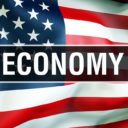Wednesday, the Federal Reserve released the 2014 bank stress test results conducted on the largest U.S. banks to show how they’d hold up in a hypothetical economic meltdown.
According to the Fed, the banks examined — which were 30 with assets of more than $50 billion — could easily withstand a crisis of even worse proportions than the 2008 financial crisis. In fact, they are supposedly in a better position today to continue lending to businesses and consumers, while continuing to pay off their debts in the aftermath of a financial downturn than they were five years ago.
Among the banks the Fed says passed the tests with flying colors were JPMorgan Chase (JPM), Citigroup (C), Morgan Stanley (MS), Bank of America (BAC), Goldman Sachs (GS) and Wells Fargo (WFC).
The only bank that didn’t meet the Fed’s requirements was Zions Bancorp (ZION). However, officials at the Fed told reporters that Zions still has time to meet the requirements through a capital plan it is set to release next week at the same time the other banks release their plans.
“The annual stress test is one of the Federal Reserve’s most important tools to gauge the resiliency of the financial sector and to help ensure that the largest firms have strong capital positions,” Fed Governor Daniel Tarullo said in a statement.
Banks that fared the best were State Street (STT), Discover Financial (DSF) and Bank of New York Mellon (BNY).
In a statement, the Fed claimed that the biggest U.S. banks would lose at least $501 billion, and that their regulatory capital levels would be reduced by 41 percent. The hypothetical scenario crafted by the central bank would be equivalent to an economic crisis that would tower above the 2008 crisis.
The hypothetical scenarios used in the bank stress test includes a peak unemployment rate of 11.4 percent, a 50 percent drop in stock markets and a 25 percent fall in housing prices.
The banking stress test results are a product of the Dodd-Frank banking reform bill, which requires the Fed to determine how the banks — those in the too-big-to-fail category — would perform in the event of another financial crisis.
The Fed now requires banks to have a minimum tier 1 common capital ratio of 5 percent during a severe economic downturn.
Zions, the only bank to fail in the bank stress test results, had a tier 1 capital ratio that fell to 3.5 percent during the most severe stress scenario, naturally below the minimum.
“Capital is important to banking organizations, the financial system, and the economy broadly because it acts as a cushion to absorb losses and helps to ensure that losses are borne by shareholders, not taxpayers,” the Fed said in its statement.
The Fed will announce next week which banks’ plans to pay dividends or buy back shares were approved.






